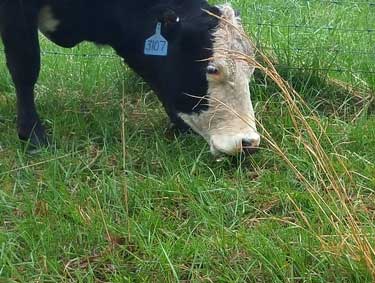Fall Acorn Crop Can Spell Trouble for Cattle
Fall Acorn Crop Can Spell Trouble for Cattle

October 21, 2021
If you’ve spent any time in the woods in the past few weeks, you’ve undoubtedly heard the sound of falling acorns. While us deer hunters may relish the fact that hunting a white oak ridge will likely prove successful, it can mean trouble for cattle farmers.
Are there other animals that are affected?
Cattle and sheep are often the most affected, but other livestock can be poisoned by acorns.
The tannins in the acorns are the toxic compound that causes trouble, often leading to symptoms such as:
- abdominal pain
- poor appetite
- diarrhea (often black or bloody in color) and occasional constipation.
- As the disease progresses, signs of kidney failure will present themselves.
- Affected cattle will exhibit dehydration (a dry, crusty muzzle and rough hair coat),
- increased thirst
- general weakness
- weight loss
- frequent urination
- a rapid, weak pulse
- Edema (swelling due to fluid that has settled out into tissue) may be noted in the lower parts of the body such as the chest, legs, and ventral abdomen. Some body cavities may also become filled with fluid.
Information from: Fact Sheet 3104: Acorn Poisoning in Cattle (Dr. Jeremy Powell, UofA Extension Veterinarian)
What should I do if my animal has acorn poisoning?
There’s not much to be done once an animal is poisoned. Some individuals will not show any symptoms and will be just fine, while others may die. For cattle exhibiting constipation, 1 gallon of mineral oil administered orally can be used as a mild laxative. Also, activated charcoal can be given to attempt to absorb the toxic compounds.
Since the options are limited, prevention is the key.
Of course, the best means of preventing acorn poisoning is to fence off the oaks. Cattle don’t have any real need to be in the woods anyway. However, that isn’t an option for everyone. If not, a mixed ration that contains at least 10% hydrated lime will help to offset the toxicity of acorn consumption. A good ration for this would be 44% cottonseed or soybean meal, 40% dehydrated alfalfa meal, corn, or cottonseed hulls, 6% vegetable oil or molasses, and 10% hydrated lime. Don’t leave out the oil or molasses. It serves to keep the lime from settling and to improve palatability. Be sure to introduce it slowly to cattle that haven’t been fed any grain.
After a few good freezes, the acorns tend to become less palatable, so consumption isn’t as common. When in doubt, contact your veterinarian if you suspect problems that you’re not sure how to deal with or give me a call if you need any help in balancing out rations for the winter!
Contact: Baxter County Extension Agent, Brad Runsick
Phone: 870-425-2335
Additional Resources
- Local County Extension Offices
- Common Arkansas Plants Poisonous to Cattle
- Extension Animal and Forage Resources
- Be alert for acorn poisoning (news article)